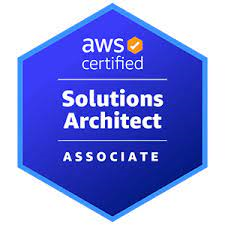AWS Certified Solutions Architect

AWS Certified Solutions Architect – Associate showcases knowledge and skills in AWS technology, across a wide range of AWS services. The focus of this certification is on the design of cost and performance optimized solutions, demonstrating a strong understanding of the AWS Well-Architected Framework. This certification can enhance the career profile and earnings of certified individuals and increase your credibility and confidence in stakeholder and customer interactions.
Who should take this exam?
AWS Certified Solutions Architect – Associate is a great starting point on the AWS Certification path for individuals who may have any of the following:
- Experience in AWS technology
- Strong on-premises IT experience and understanding of mapping on-premises to cloud
- Experience working in other cloud services
What you’ll learn
Preparing for and attaining this certification will showcase:
- Knowledge and skills in computer, networking, storage, and database AWS services as well as AWS deployment and management services
- Knowledge and skills in deploying, managing, and operating workloads on AWS as well as implementing security controls and compliance requirements
- Knowledge and skills in using the AWS Management Console and the AWS Command Line Interface (CLI)Understanding of the AWS Well-Architected Framework, AWS networking, security services, and the AWS global infrastructure
- Ability to identify which AWS services meet a given technical requirement and to define technical requirements for an AWS-based application
The course outlines.
Chapter 1 Introduction to Cloud Computing and AWS
Chapter 2 Amazon Elastic Compute Cloud and Amazon Block Store
Chapter 3 Amazon Simple Storage Service and Amazon Glacier Storage
Chapter 4 Amazon Virtual Private Cloud
Chapter 5 Databases
Chapter 6 Authentication and Authorization- AWS Identity and Access Management
Chapter 7 CloudTrail, CloudWatch and AWS Config
Chapter 8 The Domain and System and Network Routing: Amazon Route 53 and Amazon CloudFront
Chapter 9 The Reliability Pillar
Chapter 10 The Performance Efficiency Pillar
Chapter 11 The security Pillar
Chapter 12 The Cost Optimization Pillar
Chapter 13 The Operational Excellence Pillar.




